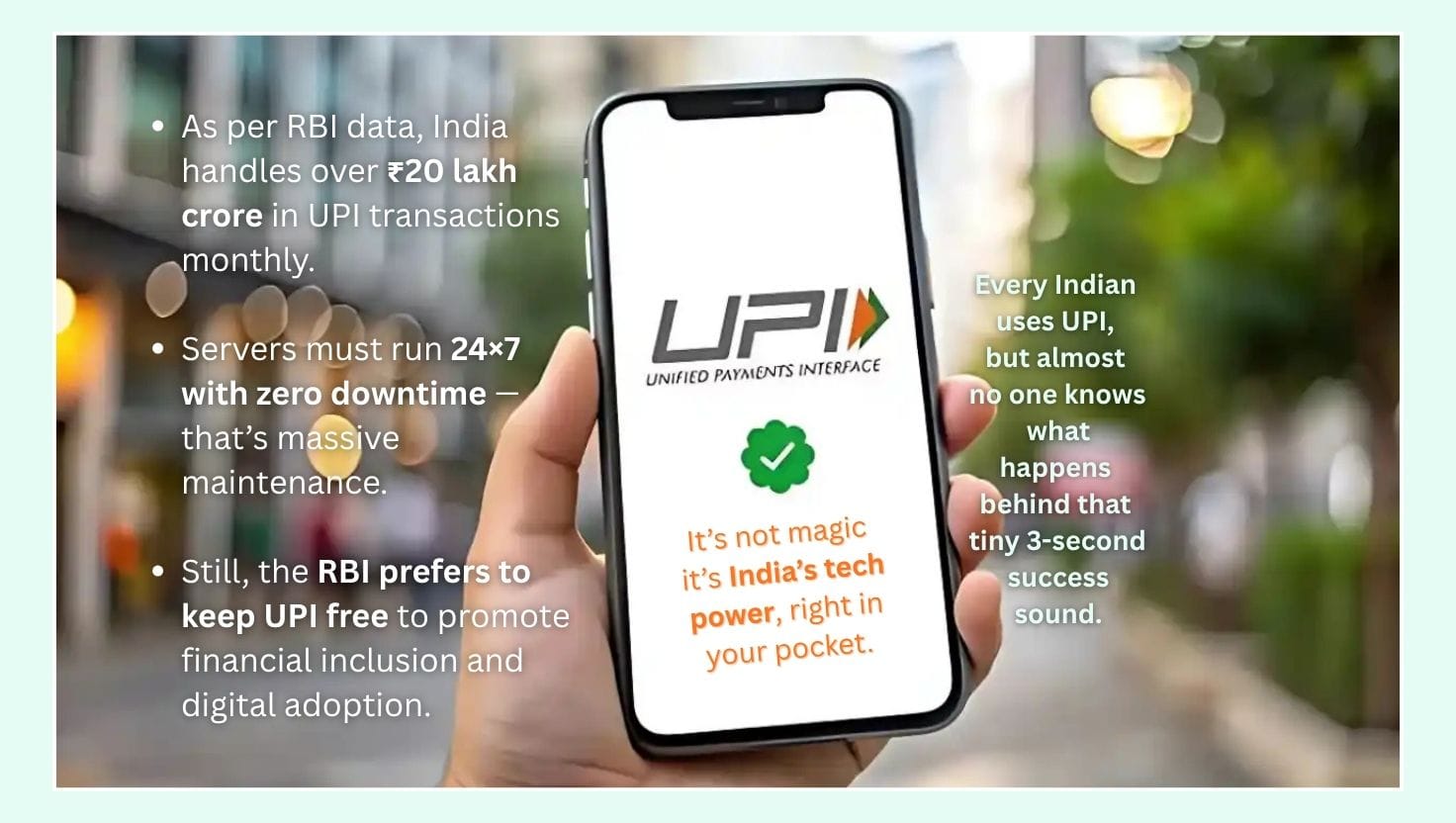What Happens to Your UPI Money When You Hit ‘Send’?
You tap ‘Send’, your screen flashes “Transaction Successful”, and money disappears from one account — and appears in another — within seconds. But have you ever wondered how that happens? #UPI #DigitalPayments #NPCI #FintechIndia #CashlessIndia #UPISecurity

Every Indian uses UPI, but almost no one knows what happens behind that tiny 3-second success sound.
📲 UPI: The Backbone of India’s Cashless Revolution
UPI (Unified Payments Interface) is India’s digital hero. It powers billions of transactions each month — from tea stalls to tech startups.
But the magic isn’t in the app — it’s in the network that connects your bank, the receiver’s bank, and the National Payments Corporation of India (NPCI) in milliseconds.
When you tap ‘Send’, four systems talk to each other — instantly and securely.
🔍 Step-by-Step: What Really Happens When You Transfer ₹1
| Step | What Happens | Who Handles It |
|---|---|---|
| 1️⃣ You Enter the Amount & UPI PIN | Your UPI app (PhonePe, Paytm, GPay, BHIM, etc.) encrypts your data and sends a request. | Your UPI app |
| 2️⃣ Request Goes to NPCI Servers | NPCI checks your bank (payer’s) and the receiver’s bank (payee’s) to confirm they’re both live on UPI. | NPCI |
| 3️⃣ Bank Checks Funds & Confirms | Your bank verifies if you have enough balance and if your UPI PIN is valid. | Payer’s Bank |
| 4️⃣ Funds Are Moved via IMPS Rail | NPCI uses the Immediate Payment Service (IMPS) system to move funds securely. | NPCI + Banks |
| 5️⃣ Receiver’s Bank Credits the Amount | The receiver’s bank updates their balance and sends confirmation. | Payee’s Bank |
| 6️⃣ You Get the “Success” Notification | Both apps get a digital receipt with a unique UTR (transaction reference number). | UPI + NPCI |
All this happens in under 3 seconds — that’s faster than most humans can blink twice.
🔐 Security You Don’t See
Every UPI transaction is secured with end-to-end encryption and a multi-factor authentication system:
- UPI PIN ensures only you authorize the transaction.
- Virtual Payment Address (VPA) hides your bank details.
- NPCI servers use ISO-compliant encryption standards used by global payment networks.
Even if someone intercepts the data, they can’t decode it — it’s encrypted in multiple layers.
⚙️ What If a UPI Transaction Fails?
Sometimes, your money gets debited but not credited. Here’s why — and what really happens:
- If the receiver’s bank doesn’t confirm within 30 minutes, NPCI automatically reverses the amount.
- The refund usually reflects in your account within T + 1 working day (T = Transaction Day).
- You can always track it using the UTR number in your app.
👉 Source: NPCI UPI Circular
🏦 Where Banks Earn in UPI
UPI transactions are free for individuals, but banks and apps still earn through:
- Merchant payments (UPI QR codes) – small MDR fees or partnerships.
- Data insights – transaction trends (in anonymized form).
- Value-added services – loan offers, credit lines, subscriptions.
So while UPI feels “free,” the ecosystem thrives on volume + partnerships.
📉 The Cost of “Free”
The government and NPCI bear huge infrastructure costs to keep UPI free.
- As per RBI data, India handles over ₹20 lakh crore in UPI transactions monthly.
- Servers must run 24×7 with zero downtime — that’s massive maintenance.
Still, the RBI prefers to keep UPI free to promote financial inclusion and digital adoption.
🧠 Why It Matters to You
Understanding UPI isn’t just tech talk — it’s financial awareness.
It teaches how:
- India’s banking rails are now real-time.
- Your digital money travels safely — even across 100+ banks.
- India has built a model the world now wants to copy (countries like Singapore, UAE, and France already partnered with UPI).
❤️ Final Thought
Next time you tap ‘Send’ and hear that sweet “ka-ching” sound, pause for a second.
That wasn’t just a ₹ transfer — it was millions of lines of code, four institutions, and a national network working in perfect sync to make your life easier.
It’s not magic — it’s India’s tech power, right in your pocket.
⚠️ Disclaimer
This article is for educational purposes only and is based on information from NPCI, RBI, and public banking sources. Transaction timelines and systems may evolve over time. Always verify details with your respective bank or the NPCI website.
